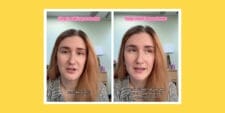We talked to the U.S. Secretary of Education—here’s his vision for next school year

In an exclusive interview with Motherly, Secretary of Education Miguel Cardona discussed the safe reopening of schools, the importance of listening to parents and the possibility of using schools as vaccination sites.
Table of Contents
When Dr. Miguel Cardona was sworn in as the 12th Secretary of Education, it marked the return of a lifelong educator in the department’s top spot. Dr. Cardona spent two decades in the Connecticut public school system, first working as a fourth grade teacher, principal and assistant superintendent before serving as Connecticut’s education commissioner.
In his new role, Secretary Cardona is responsible for overseeing the Department of Education’s safe reopening of public schools amid the pandemic. In an exclusive interview with Motherly, Secretary Cardona made it clear that while safety is the utmost priority, he also wants to foster a more collaborative relationship between schools and parents. As a veteran educator and father of two, he understands the trust parents place in their child’s teachers. He hopes to build on the lessons learned by educators and families during the pandemic—and to soon have the option for in-person learning for all students across America.
WATCH + SHARE
“Secretary Cardona Interview”
Here’s what Secretary of Education Miguel Cardona had to say about reopening schools, the importance of connecting to families and the possibility of using schools as vaccination sites:
School is in session currently but parents are already looking ahead to the back-to-school return this fall, especially with the news that the Pfizer vaccine is looking likely to be approved for children as young as 12. Can you please speak to the Department of Education’s plans for a safe return this fall?
Secretary Cardona: It’s critical that it’s safe. Listen, I’m a father before anything else and that’s the role that I relish the most. I wouldn’t put my children in harm’s way and risk their safety. So, a safe reopening has been the key from Day One. What we’re finding is with the rollout of vaccination, with the new guidance from CDC and with the data that we’re seeing that shows that schools are not places where there’s spread happening if mitigation strategies are followed, I’m really confident that we should be open now for in-person learning for all students and it can be done safely. But I expect that in the summer and in the fall, that our default is every day in-person option should be offered for every student.
data-instgrm-captioned data-instgrm-version=”4″ style=” background:#FFF; border:0; border-radius:3px; box-shadow:0 0 1px 0 rgba(0,0,0,0.5),0 1px 10px 0 rgba(0,0,0,0.15); margin: 1px; max-width:658px; padding:0; width:99.375%; width:-webkit-calc(100% – 2px); width:calc(100% – 2px);”>
Are there any plans to use the public school systems to offer greater access for vaccinations? Are there plans in place to potentially use the actual buildings?
Secretary Cardona: I think we really need to rethink schools. Schools are the hub of the community. One thing that we don’t talk a lot about is that our students and staff missed a sense of community this past year. That’s why the President’s American Families Plan is really big on ensuring community school, and our budget in the process, community school growth. Because we know that schools are the hub of the community. For many, they trust their child’s teacher the most and they trust their child’s principal the most. So when you talk about surveillance testing of COVID or vaccination distribution, it is logical to make schools a place where we can consider doing those events.
I visited Boston recently in the Help is Here tour and I saw that they set up a vaccination site very close to a school in the community and that helped parents feel more comfortable. So it’s a strategy I would totally support. I spoke to a governor recently about considering that same thing you brought up, utilizing those schools for places to provide vaccinations, if possible, and I think it just makes sense.
Is there a future that you can see where getting vaccinated would be required to attend school?
Secretary Cardona: That’s been a topic of conversation in many places. Many universities have required that. I think at this point, I really feel that it’s . . . I’m going to leave those decisions to my partners in Health and Human Services, the CDC and our health experts. That’s their expertise; I want to make sure that they’re weighing in on it. I’ll take care of the education piece of it, but we’ll work closely to make sure that we’re doing our part to reduce transmission and to make sure that schools are safe, not only for our students but for our staff.
I would imagine that the Department of Education, since the pandemic began, has been learning so much about how to operate safely during a pandemic. Can you speak to how these lessons that you’ve already learned will be applied going forward?
Secretary Cardona: Part of what’s helped schools reopen is just listening to other schools that dealing with the same problems. We learn best from each other. What we’ve tried to do early on is not only listen to our stakeholders, to our educators, to our principals, superintendents and put together handbooks. We have two versions out. We have a third one coming out very soon. We’ve had summits where people can come together and share best practices. We’re lifting up those best practices so that people can learn from one another.
We also have a best practices clearinghouse. We asked around the country, ‘what’s working with reopening? What are you finding to be successful?’ You know, we got over 1,100 entries. And we vetted them. We have 200 right now that we put up on the website and more are going to be coming soon. As you said, it’s important not only to know what works, but also to share it. Because there are a lot of communities that are struggling with some of the same things that other communities have already problem solved.
You said that’s available on the website. Is that available for everyone? Would parents be able to access that or is it just for educators?
Secretary Cardona: I would love every parent across the country to get out there, find a great practice and then go talk to their school communities and say, ‘How can we do this?’ It’s for everyone.
data-instgrm-captioned data-instgrm-version=”4″ style=” background:#FFF; border:0; border-radius:3px; box-shadow:0 0 1px 0 rgba(0,0,0,0.5),0 1px 10px 0 rgba(0,0,0,0.15); margin: 1px; max-width:658px; padding:0; width:99.375%; width:-webkit-calc(100% – 2px); width:calc(100% – 2px);”>
If you could speak directly to parents, what would you say?
Secretary Cardona: First of all, I want to say thank you. We’ve talked about how the education profession has been turned upside down but parenting has also. As I said earlier, I’m a father. My wife and I have two high schoolers. I don’t want to go too far into this response without acknowledging the challenge it has been to be a parent during this COVID pandemic, to also be like a co-teacher. My kids are in high school, they’re pretty much independent. But we have so many parents that have a six-year-old, a seven-year-old that needs support. And you have to balance so much.
I want to assure the parents that their children’s health and safety are first and foremost in my mind and that their social and emotional well-being, their emotional health, is critically important for me, as well. As we bring them back, we want to make sure the resources are there to provide a program that not only gives them the academic support they need, but does it in a nurturing environment where they feel welcome, they feel safe and they feel supported.
Is there anything that I didn’t ask you that you wish I did?
Secretary Cardona: This pandemic brought out challenges that we’ve had in education before, and it just exacerbated them. We know some students have more access than others. We know some students were impacted not only by the education disruption but by losses in their family. The pandemic hit some areas harder than others. It’s really going to be a process but we’re eager and there’s a sense of urgency in our agency to make sure that it’s not just about turning on the lights and making sure the desks are clean. It’s really about providing a program that accelerates learning, gets students engaged with one another, and as I’ve said before, addresses the trauma that they’ve experienced. It’s going to be a long-term process.
And that lastly, for the parents, we need you. We need to do better connecting with families, especially those families that maybe don’t feel as comfortable connecting with the schools. Let’s make this a new day. Let’s make this a new relationship where we’re listening to you more. Our schools are listening to you more. We have to do better to serve your children better. I want to lock arms in partnership and say that together, we’re going to get through this the best we can and your voices are critically important to that mission.


































